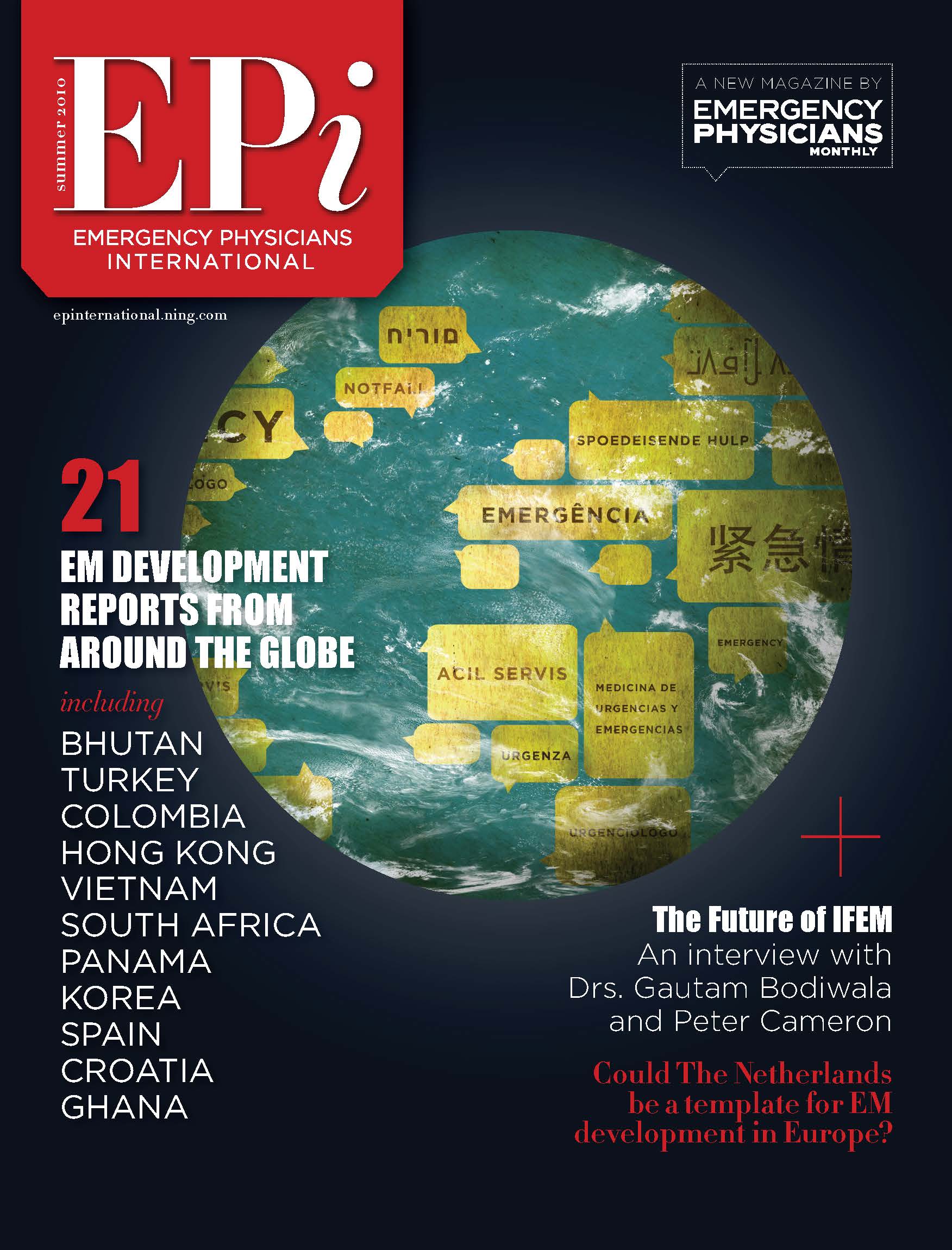COVID-19 in Colombia Part II: Lessons Learned
When considering service infrastructure, it is imperative that we think outside the box. Communication and teamwork are absolutely key. We can start by identifying levels of complexity, defining actions specific to each level. We usually fall into the problem of wanting to manage and study patients in the emergency room. While this method has some benefits, it also increases length of stay and biological exposure in unnecessary ways.
At a low level of emergency (Level 1), it is possible to contain the largest volume of demand in basic care. Therefore, we can distribute low complexity patients with low risk of contagion within available services. Handling the usual overcrowding with routes defined by length of stay allows for standardization of care, reduction of professional variability, safety maximization, and increased opportunity within the patient experience.
For emergency care in the clinical context, the physician must resolve the emergency in a way that both eliminates the risk and minimizes complication. With this care goal in mind, we can address relevant pathologies most effectively. Route options for care must be related to the diagnostic aids that are possible for each emergency department to eliminate risk by working with the tools most accessible. This acknowledgement of need also guarantees the stay times are not increased for patients who may not need complex aids. Therefore, when the patient does need long-term monitoring, they are no longer identified as an emergency room patient, and other resources are allocated to their care.
One example of the tension between different needs occurs when a patient arrives with pain due to kidney stones. We often focus on requesting a CT urography, despite the patient's need to relieve the pain (not to take a photo). This course of action does not solve the emergency of pain, recognize the complication, and determine the risk effectively. In the emergency department, there is no immediate need for a CT urography. This patient needs rapid pain relief, and can be scheduled for CT urography after discharge from the emergency department. Many diagnostic aids, including this one, are presented as solutions to patients, when in reality they usually prolong patient stays in the emergency room.
Through standardized emergency department care routes that prioritize immediate needs, we can improve the approach for patients. Standardization shortens stay times and allows for more productive teamwork. Overall, the patient experience improves and (in cases with transmittable patient conditions,) the risk of exposure for the emergency care team is minimized.
COVID-19 has illustrated previous overcrowding in emergency departments. We have adapted accordingly, and we must learn long-term solutions from this experience. It would be a mistake not to learn from this situation, which showed us the need to take more seriously the biological risk that H1N1 or TBC or pneumonia left us before.
Now more than ever, we need to give the right message to our patients and the greater community. There is a very real risk in going to the emergency room without a real need. The pandemic has demonstrated that virtual options can be accepted by the community, and that they are efficient means of communication. Virtual options achieve the right message for the right patient in the right place, which minimizes risk while acknowledging patient needs.
Successful impact on public health depends on medical personnel and our ability to convey the risk of biological contagion in a way that is simple enough to be accessible, and firm enough to have an effect. Today is SARS2, but tomorrow it may be something entirely different. We must make everyone aware of the risk of not taking care of us all.
Our weaknesses compile in a few ways: the often-forgotten need for specific areas of care, not working to achieve satisfactory attention times, the use of the emergency room as a place to study patients, and a lack of risk assessment within the service. We have to learn greater discipline; we have to learn to communicate with each other and work as a team.
Distributing the care burden between levels of care allows each department to optimize the use of their strengths, and improve patient experience. We must not fall back into the error of assuming any crowd is a team; teams must be curated and nurtured. Our emergency services must learn to have designated frameworks for their services, and profiles to acknowledge the complexities of each circumstance. In doing so, we eliminate variability and allow ourselves to define our capabilities. As a result, each patient’s circumstances are in alignment for success: the right doctor, the right approach, and a safe environment for all.
Though each of these hospital methods matter, it is important to note that patient paths are determined outside medical centers, pre-triage. With COVID-19, a risk stratification is performed with the National Early Warning Score 2 value before triage. This action allows to separate high- and low-risk COVID-19 patients, so the physicians are set up to provide appropriate care. By dividing into assorted risk groups, each is directed to treatment areas where care is aligned to solve the emergency. This eliminates risk and minimizes exposure, preserving the emergency room for only acutely ill suspects and known COVID-19 patients who need resuscitation. Avoiding recirculation is the key, and this framework makes it possible. The entire route is characterized to ensure that everybody has adequate protection and a variety of diagnostic aids for each risk area. This accelerates the clarification of medical need and response, and shortens exposure times for everyone. By organizing the facilities in this way, the behaviors and care routines, feeding, and use of biosecurity measures are easier to implement and comply.
With the adaptation of the COVID care centers and the permanent use of a special protective suit came a few unique challenges. The protective uniforms cause additional sweating and fatigue, which led us to rethink the shift times, the time for an active pause, use of restrooms, and other break needs for physicians. We had to overcome mistakes of fixation as well as prejudices. To create holistic care within our physician community, we needed extra training and engagement with the Human Resources department to achieve the well-being, mental health support, and safety of the staff. The access and exit path for healthcare staff changed completely.
Ideally, with proper frameworks, each patient’s needs can be recognized from the start of triage and oriented to the appropriate area, whether their ailment is a kidney stone or COVID-19. Within these frameworks, physicians’ needs can also be met as they continue to give back to the patients they serve in more streamlined ways that minimize avoidable stress. The pandemic has shown us how we should adapt risk areas to avoid contamination of the service, among other needs, which empowered us to develop better frameworks than were previously the norm.







